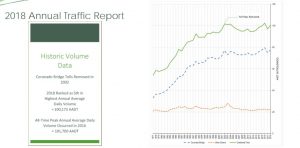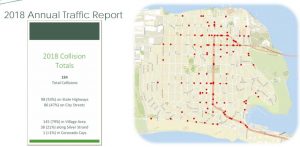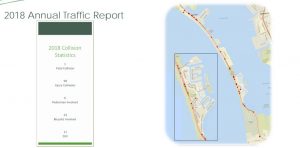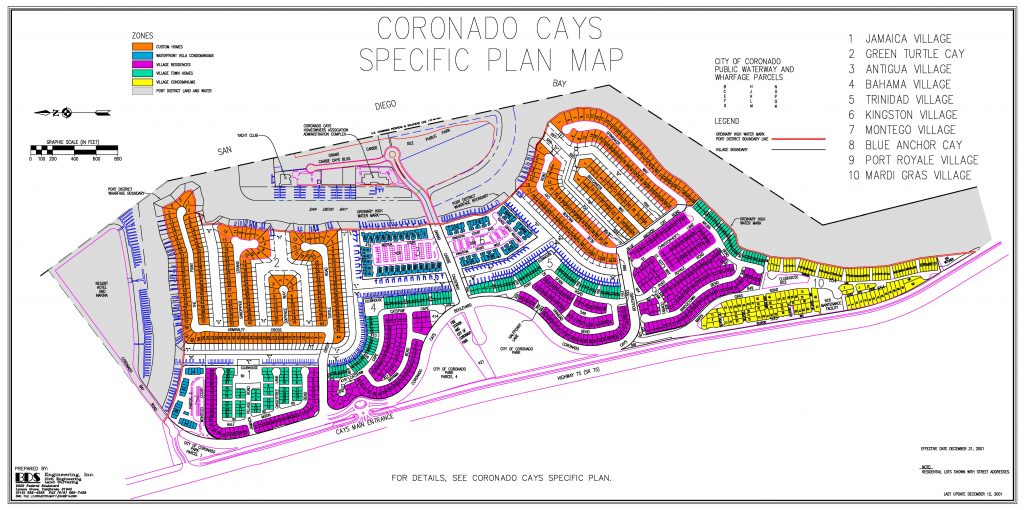 The first City Council meeting of the new year had a short agenda, but several important issues were discussed. Rich Grunow, Director of Community Development, gave a presentation on the development standards for second story additions in the Coronado Cays. This issue was precipitated by a current Cays resident’s project being approved by the Cays Homeowners Association but denied by the City Planning Department for construction on a second story addition, even though it appeared identical to a previously approved project. There was a lot of discussion on how the current code is written and how it has been applied over the years. City staff is now asking the Council for clear code direction going forward. Several Cays residents spoke, including the homeowner whose project brought this to light.
The first City Council meeting of the new year had a short agenda, but several important issues were discussed. Rich Grunow, Director of Community Development, gave a presentation on the development standards for second story additions in the Coronado Cays. This issue was precipitated by a current Cays resident’s project being approved by the Cays Homeowners Association but denied by the City Planning Department for construction on a second story addition, even though it appeared identical to a previously approved project. There was a lot of discussion on how the current code is written and how it has been applied over the years. City staff is now asking the Council for clear code direction going forward. Several Cays residents spoke, including the homeowner whose project brought this to light.
Looking back on the history of this subject, all the homes in the Cays Village residential zone have a zero setback on one side of the lot. In 1968, the City Council adopted a Coronado Cays Special Use Permit (SUP), and then in 2001, a Cays Specific Plan was adopted, allowing additions only on the ground level within the Cays Village residence zone. Between 2005 and 2007, the City Council addressed this issue and held three public hearings but left the wording ambiguous. Grunow pointed out three options for the City Council to take:
- Direct staff to work with the CCHOA General Manager to present the issue to appropriate boards and commissions to develop a recommendation for the Council’s consideration.
- Direct staff to allow second story additions throughout the Cays Village residence zone, provided full setbacks are provided. This would mean updating the current code to reflect this change.
- Direct staff to only allow first story additions until the code is approved by City Council.
Henry Angelino, CCHOA General Manager, requested additional time to solicit residents and then return with recommendations. This was consistent with Grunow’s recommendation number one and the council approved the motion, with Councilmember Heinze abstaining due to conflict and Councilmember Donovan voting no due to wanting number three approved also. Everyone agreed that this gives needed time to send letters to the Cays homeowners and solicit input to bring back a unified recommendation on which the council can vote.
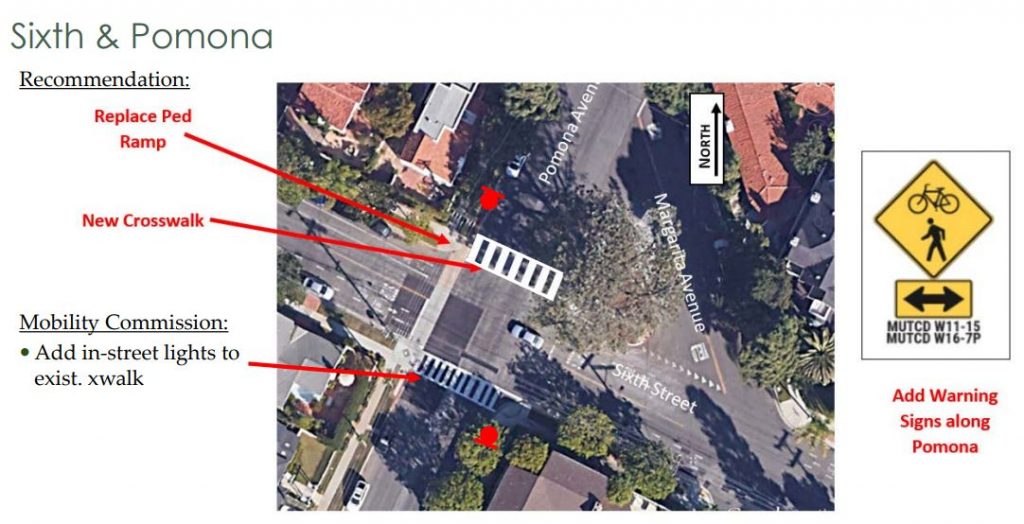
Jim Newton, Senior Engineer, gave two traffic related presentations. The first was in regard to the busy intersection at Sixth Street and Pomona Avenue and implementing traffic calming and pedestrian safety improvements. He noted that the volume on Pomona Avenue is approximately 10,500 cars per day, which was determined by an inconspicuous radar gun. Sixth Street is a suggested safe route to school with bike lanes, a high visibility crosswalk and an in-road warning sign on the south side, and speed humps on both streets. Seven feasible improvements were presented at a variety of cost levels. The city staff recommended adding warning signs along Pomona Avenue, replacing the pedestrian ramp to meet ADA standards, and adding a new crosswalk. The Mobility Commission requested the additional safety feature of adding in-street lighting to the existing crosswalk. After much discussion among the council, who agreed with several residents who spoke that this is a challenging intersection with many “near misses,” the main issue is trying to better alert drivers to pedestrians crossing the street. Councilmember Donovan lobbied for asking the Mobility Commission to create an overall master plan strategy for traffic calming so that going forward they have a “toolbox” to prioritize and budget for these issues. All of the councilmembers support bulbouts and landscaping options as effective traffic calming measures. For the short term, the council approved the staff’s recommended plan, with the addition of the Mobility Commission’s recommendation, and long-term strategy of the creation of a master plan.
Newton continued by presenting the city 2018 Traffic Report. Some highlights include: Bridge traffic averaged 100,173 cars per day entering and leaving Coronado, ranking it as the fifth highest since 1977 when data collection started. The highest volume was in 2016 with 101,700 vehicles. There was an average of 22,725 vehicles per day along the Silver Strand, with 58 percent more traffic on weekdays versus weekends.
The year saw 184 collisions, and only one fatality, with 98 accidents on State Highways and 86 accidents on city streets. Seventy-nine percent, or 145, were in the village, 21 percent or 38 were along the Silver Strand with one in the Coronado Cays. This number is down from a high of 218 accidents in 2017. A staff recommendation was to continue efforts to construct bulbouts at Fourth Street and A Avenue. The Council unanimously accepted this report.
In Blair King’s City Manager Report, he reported that a final letter was sent this week to the SANDAG Board of Directors appealing the Regional Housing Needs Assessment (RHNA) of an additional 1001 housing units slated for Coronado. The letter spells out the constraints of the area including the Coastal Commission, State Parks, Port of San Diego, Military and space restrictions. The city asked that military jobs and no-cost and low-cost military housing be taken into consideration for developing a reasonable number to which Coronado could comply. Click here for a link to the PDF of the seven page letter.
King also referenced the San Diego Regional Airport Authority’s draft Environmental Impact Report (EIR) which will impact more than 30 homes here. The report is available for review at the city offices and the Coronado Library with public comments welcome until the February 7 deadline. The city is also preparing a response. The EIR draft can also be accessed by clicking here.
An updated Community Grants Evaluation was presented by Senior Management Analyst Dominique Albrecht. This is a follow-up with amendments incorporated from previous council meetings. To briefly review, the four key application categories are: Economic Development, Social Services, Community Pride/Sense of Place, and Arts and Culture. Councilmembers weighed in on the value that each criterion should carry for grant applicants with Arts and Culture remaining as written. The council unanimously voted to direct staff to a final rubric based on council discussion. The community is invited to give their input. Complete details can be viewed at www.coronado.ca.us/communitygrants or requested via email at [email protected] or in-person at the March 3 council meeting. Final evaluation criteria will be presented to the council on April 7. Community Grant Funding will be awarded in July and distributed in August 2020.
Some items of note that were unanimously approved on the Consent Calendar were:
Three donations totaling $3000 to support the John D. Spreckels Center Music Series. Councilmember Sandke thanked the Gill, Bardin and Batko families for their generous gifts.
Contract awarded to the M.W. Steele Group Inc. for a design and cost feasibility study for the Library Winn Room renovation project.




